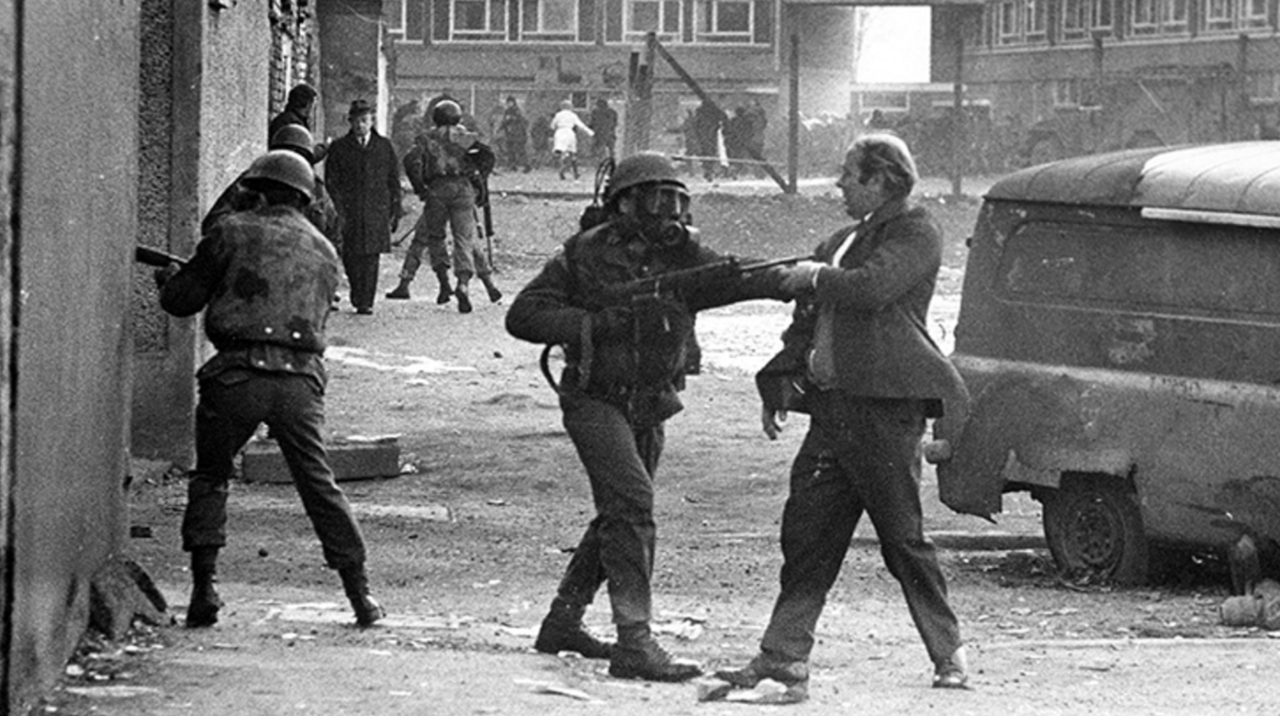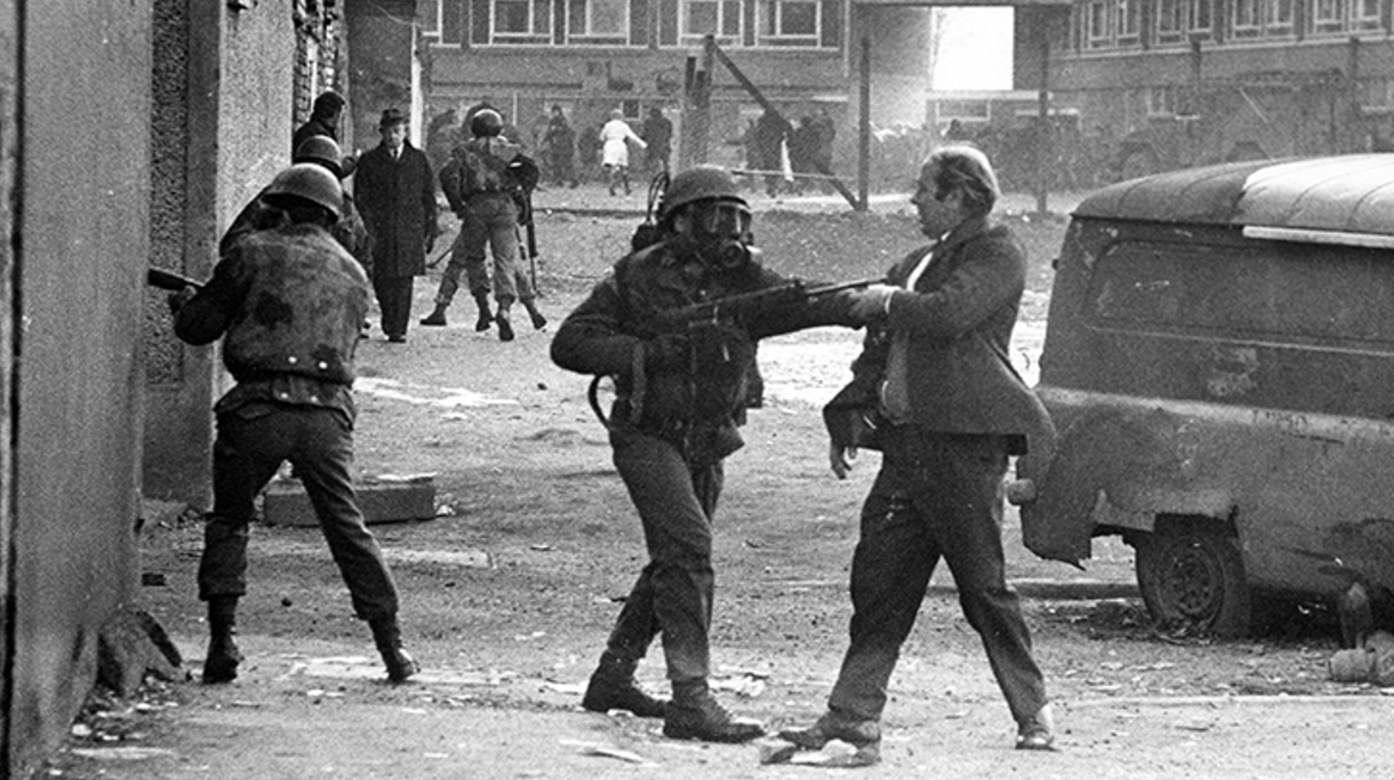The case against ‘Soldier F’, a veteran charged with the murders of two men and attempted murders of four others on Bloody Sunday, has today collapsed. In March 2019, Douglas Murray wrote for The Spectator about the 1972 massacre and the subsequent Saville Inquiry into what happened.
It is more than 15 years since the Bloody Sunday soldiers last appeared in public. For months I sat in the room with them to watch their evidence at Lord Saville’s inquiry. And while Lionel Shriver is right that the sight of terrorists benefiting from an immunity denied to our soldiers is grotesque, there are competing qualms. Not only because British soldiers should be held to a higher standard than terrorists. But because, having watched all of the Bloody Sunday shooters testify, I can say with certainty that they include not only unapologetic killers, but unrelenting liars.
As one soldier after another appeared before Lord Saville, it became clear that the soldiers of 1 Para were intent on spurning this last effort to get to the truth of what happened that day. Almost without exception they stonewalled, sticking to the testimony they had given in 1972, repeating claims that had been repeatedly disproven and, when in difficulty, pleading forgetfulness. Not a plausible forgetfulness, but a highly selective, implausible type. Their evidence was evasive, frustrating and self-damning.
The Saville inquiry had promised immunity from further legal action to all witnesses who told the truth about their actions on the day. In that quiet inquiry room, one and a half decades ago, the soldiers of 1 Para might have come clean and admitted what they had done before sinking back into anonymity and retirement. Instead they stuck to their lies.
For example, on the day itself, four soldiers — E, F, G and H — moved as a brick into one of the more concealed areas of the Bogside. By their own evidence they were responsible for at least half of the deaths that day. By the time of the Saville inquiry, soldiers E and G were dead, but F and H were not, were called and clearly reluctantly appeared. H was the soldier who had fired the most number of shots that day, including 19 he said he fired at a single window that did not shatter. But it was soldier F — who fired 13 rounds on the day — whose performance in 1972 and 2003 was most disturbing. It always seemed to me that if anyone was deserving of prosecution, then it was him.
F started lying from the moment the shooting stopped. Like every other soldier who had fired, F was immediately asked to give the Royal Military Police (RMP) his justification for, and direction of, each shot. So in the early hours of 31 January 1972 F pointed on a map to a number of positions where he claimed to have fired at gunmen and nail-bombers. At no stage did he admit to firing at the rubble barricade where Michael Kelly had fallen, shot side-on in the abdomen. Yet while F was speaking to the RMP, at the nearby hospital a 7.62mm calibre bullet was being dug out of the spine of Michael Kelly’s body.
In the weeks that followed the rifles of the soldiers who had fired were sent to a Belfast laboratory for testing. Realising that unmentioned shots would be traced to his gun, F chose to radically alter his story.
So at Lord Widgery’s inquiry, several weeks after the day, F decided to recall firing at a ‘bomber’ at the rubble barricade. There was no bomber at the barricade. But the bullet that had lodged in Kelly’s body was indeed shown to have come from F’s rifle. And so at that earliest stage of the search for the truth, F’s first lie — and first murder — was exposed. And nothing happened. F stayed in the army and periodically received promotion.
Under questioning in 2003, the short and stocky F — then in late middle age — was reduced to monosyllabic answers, generally of either ‘yes’ or ‘no’. He claimed to remember almost nothing of the day, despite it being his first visit to Londonderry and — by his own admission — the most shots he had fired on any deployment up to that date. Under devastating questioning, F was shown to have killed at least four people that day. One of them was Patrick Doherty, shot through a buttock as he was crawling away. One more killing which soldier F had ‘forgotten’ about when first questioned by the RMP.
Then, while Doherty lay crying in agony, a 41-year-old man called Barney McGuigan stepped out from behind a block of flats to try to get help for the dying man. McGuigan was waving a white handkerchief. According to the testimony of numerous witnesses, including an officer from another regiment stationed on the city walls, soldier F — positioned on the other side of the road — got down on one knee and shot McGuigan through the head. No one who saw the mortuary photos of the exit wound in McGuigan’s face will forget what just that one bullet of soldier F’s did.
Unusually, F’s first name is in the public domain. It is ‘Dave’. It is public because a number of witnesses heard it shouted. One wounded civilian lying on the ground heard the brick of four soldiers calling to each other. ‘I’ve got another one’ shouted one. And then, ‘We’re pulling out, Dave.’
In 1972 Dave — F — committed perjury in front of Lord Chief Justice Widgery. He perjured himself again before Lord Saville in 2003. Perhaps on that disastrous day in 1972 he thought he was teaching the citizens of Londonderry some kind of lesson. Or perhaps — under what he presumed to be suitable cover — he just seized an opportunity to kill with impunity on British streets. It is true that few people are comfortable with retired soldiers being prosecuted. But if soldier F did indeed presume he could get away with murder that day, who is comfortable with that presumption proving right?







